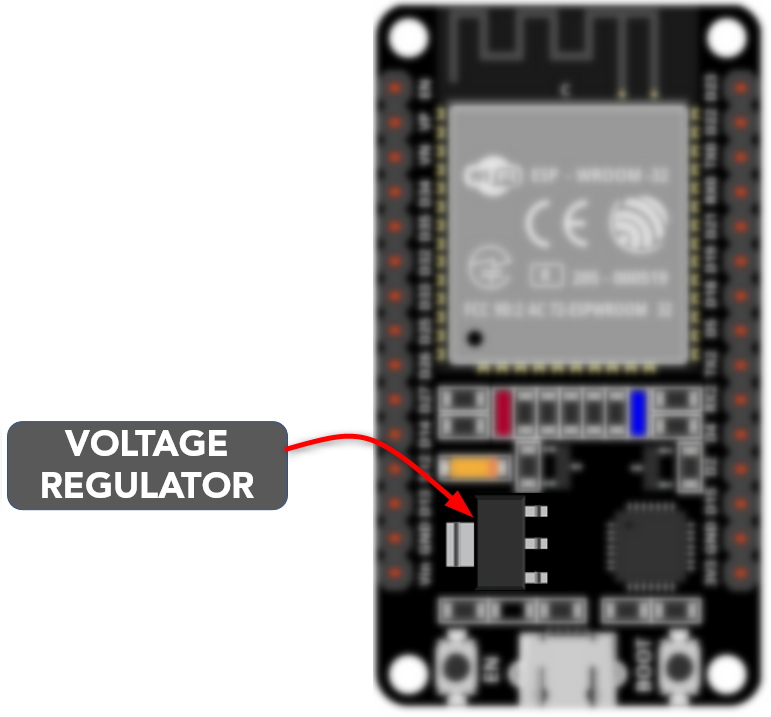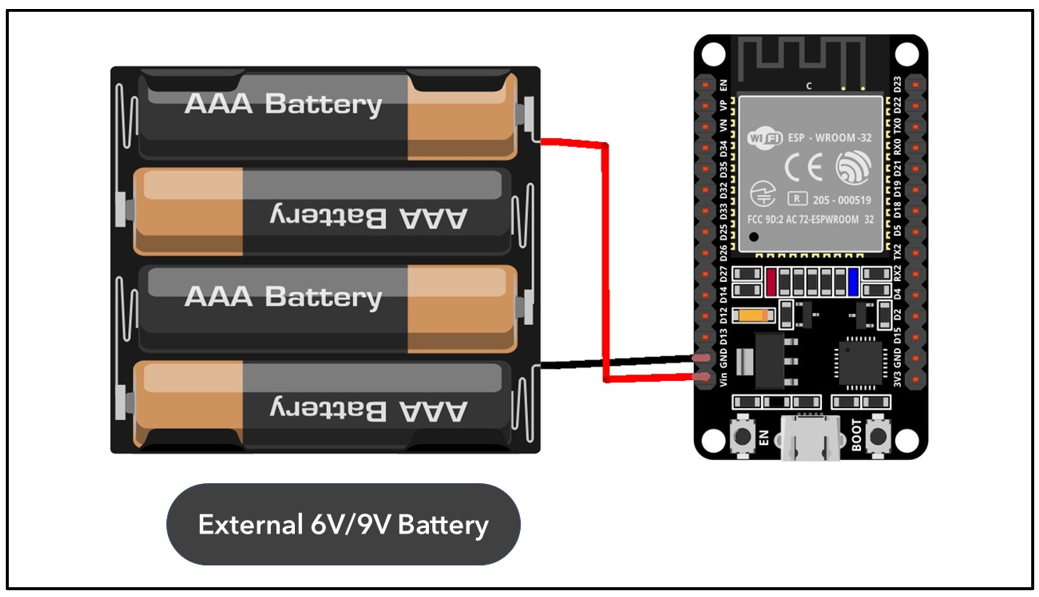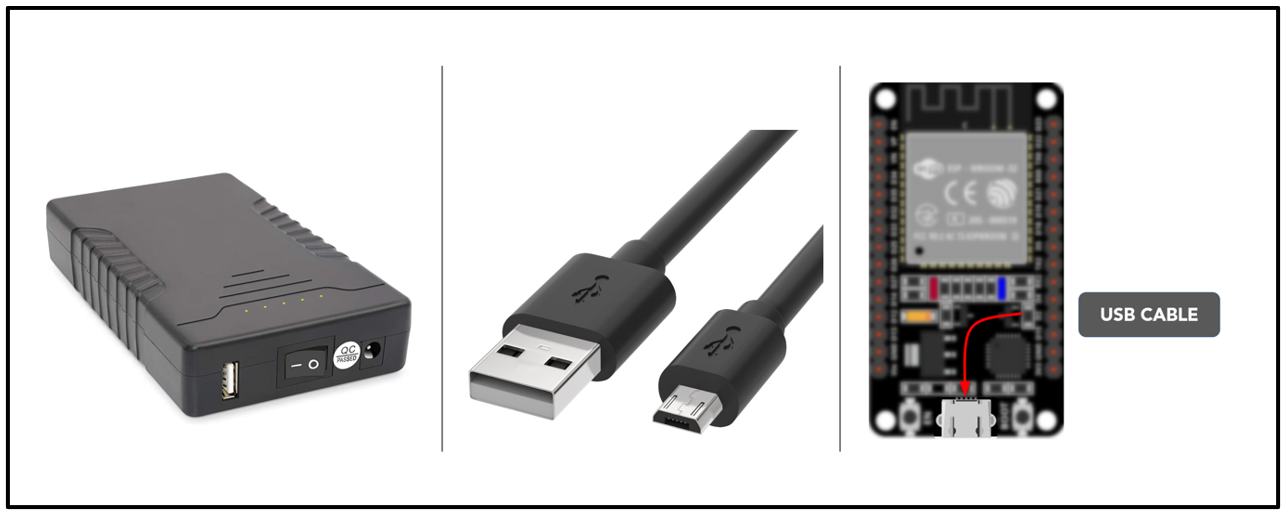Introduction to ESP32 Power Usage
ESP32 boards operate in a voltage range between 2.3V to 3.6V. Normally ESP32 boards are powered with USB which is 5V. This 5V is regulated by an onboard LDO voltage regulator (AMS 1117). Any voltage given to ESP32 is first regulated by this LDO regulator then fed to the on-board peripherals.

This 3.3V voltage regulator can reliably supply up to 600mA of current, however the recommended current from any GPIO is 500mA. Which is more than enough for most of the sensors and modules for controlling purposes.
As we have covered the basics of ESP32 power usage and its voltage and current requirements, now we will take a look at different ways of powering ESP32 using an external battery.
Ways to Power ESP32 with Battery
Keeping in mind the requirements of voltage regulator we can power ESP32 using an external battery with the following different ways:
Power ESP32 Using a 6V/9V Battery
ESP32 boards like Arduino also come with the Vin pin. This Vin pin not only serves the purpose of powering external peripherals connected to ESP32 but can also power ESP32 if other power sources are not connected.
Vin pins in ESP32 and other microcontroller boards like Arduino are connected to on board voltage regulators. Any voltage connected across the Vin pin goes to the regulator first which reduces it down to 3.3V and after that fed to the ESP32 board peripherals.
Using an external battery of 6V or 9V we can power ESP32 through the Vin pin by connecting the GND of ESP32 with the GND of the battery. Any voltage between 5V to 12V can be connected to an ESP32 Vin pin however it’s recommended to not use more than 9V external battery. As ESP32 only needs 3.3V to operate, the rest of the voltages are dissipated by the LDO voltage regulator as heat.
Power ESP32 Using External Regulated 3.3V Supply from Battery
The next on the list for powering ESP32 is using the 3.3V pin. It’s by far the most complicated method for powering ESP32. As the 3.3V pin is designed for output purposes such as to connect sensors and hardware modules however it’s also possible to power ESP32 with this pin.
To power ESP32 with 3.3V pin following two configuration can be used:
- Use external 3.3V battery
- Use a regulated supply with 3.3V
As it is difficult to find a 3.3V battery so we would recommend using an external regulated 3.3V supply. We don’t recommend using a 3.3V external battery as after a certain operating time the voltage will be reduced to less than 2.55V which is the minimum operating voltage for ESP32 so even the battery is still at its 70% but it is of no use.
Warning: Before powering ESP32 with 3.3V pin make sure to double check the fed voltage is 3.3V coming from regulated supply. Any voltage beyond this value will burn the ESP32 board resulting in release of blue magic smoke.
This is because the 3.3V pin bypasses the on board LDO voltage regulator. Make sure to connect ESP32 GND with external supply GND.
Power ESP32 Using Battery Bank
One of the safest and reliable sources of powering Arduino is using an external rechargeable power bank. As these power banks are widely available and most of these contain 5V USB ports which is not only the safest option for ESP32 but increases operating time for ESP32.
Another positive thing about power banks is they are fully rechargeable and with thousands of rechargeable cycles we can power ESP32 for a longer period of time.
One downside to power banks is that when ESP32 is inside the deep sleep mode it consumes very less power that power banks turn them off considering that no device is being connected. So, make sure to check these specifications while buying a power bank. Here is a 12000mAh power bank to buy with a USB port and LED indicator.
Cautions
Here are some warnings that need to be kept in mind while powering ESP32 with external battery:
- Always use regulated voltage
- Don’t connect devices with ESP32 that draws more current such as motors
- Don’t use more than one power source together
- If the voltage regulator heats up turn off the ESP32 board
Conclusion
ESP32 can be powered using different sources which increase its mobility and long-term usage. By enabling the deep sleep mode in ESP32 it can last up to 1 year on a single battery. Here we discussed all possible ways of powering ESP32 using an external battery. Among all, powering ESP32 with a power bank is most efficient.



